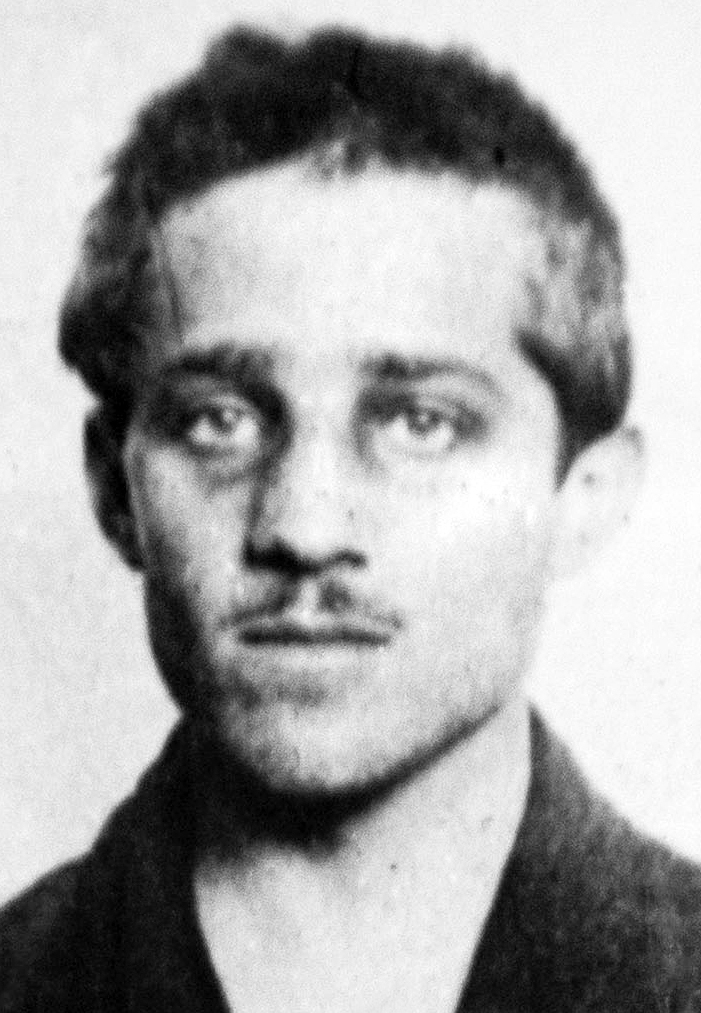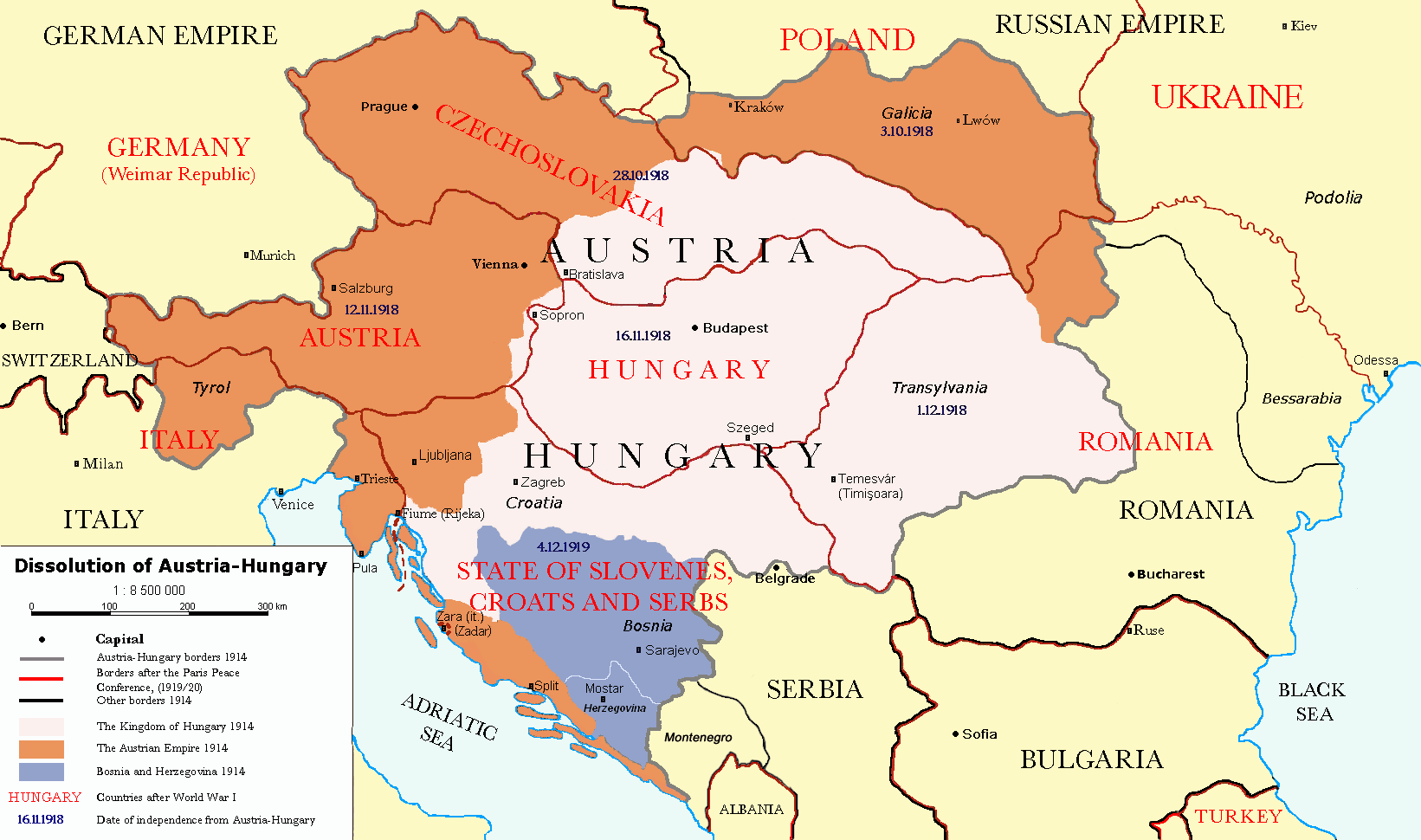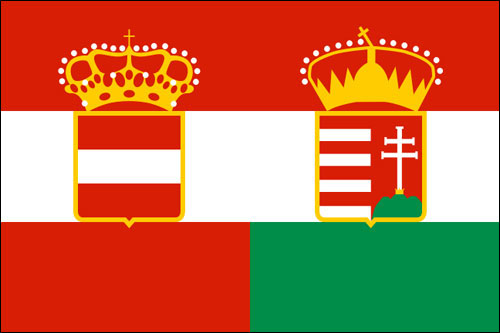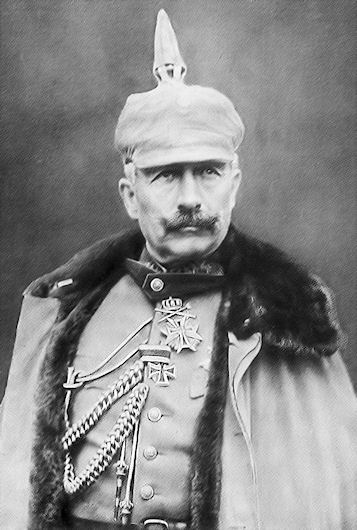Allied leaders of WW1
Russian Empire Russian Empire[edit]
Two bearded men of identical height wear military dress uniforms emblazoned with medals and stand side-by-side
King George V (right) with his first cousin Tsar Nicholas II, Berlin, 1913. Note the close physical resemblance between the two monarchs.[1]
Nicholas II[2] – last Tsar of Russia, titular King of Poland, and Grand Duke of Finland. His rule ended with the Russian Revolution. Nicholas was killed on 17 July 1918.
Alexander Kerensky[3] − Prime Minister of the Russian Provisional Government
Grand Duke Nicholas Nikolaevich[4] – Commander-in-chief and viceroy in the Caucasus
Alexander Samsonov[5] – Commander of the Russian Second Army for the invasion of East Prussia
Paul von Rennenkampf[6] – Commander of the Russian First Army for the invasion of East Prussia
Nikolay Ivanov[7] – Commander of the Russian army on the Southwestern Front, responsible for much of the action in Galicia
Aleksei Brusilov[8] – Commander of the south, then provisional Commander-in-Chief after the Tsar's abdication
Russian Soviet Federative Socialist RepublicRussian SFSR[edit]
Vladimir Lenin[9] − Chairman of the Council of People's Commissars of the Russian SFSR
France France[edit]
Raymond Poincaré[10] – President of France, 1913–1920
Rene Viviani – Prime Minister of France 1914-1915
Joseph Joffre[11] – Commander-in-Chief of the French Army and Marshal of France
Ferdinand Foch[12] – Commander-in-Chief of the French Army and Marshal of France, "Generalissimo of the Allied Armies" from spring 1918
Robert Nivelle[13] – Commander-in-Chief of the French Army
Philippe Pétain[14] – Commander-in-Chief of the French Army and Marshal of France
United Kingdom of Great Britain and Ireland United Kingdom[edit]
George V[15] – King of the United Kingdom and the other Commonwealth Realms, Emperor of India
H. H. Asquith – Prime Minister of the United Kingdom (until 1916)[16]
David Lloyd George – Prime Minister of the United Kingdom (from 1916 to 1922)
Douglas Haig – Commander-in-Chief of the BEF
John Jellicoe – Commanding officer of the Grand Fleet (1914–1916), First Sea Lord (1916–1917)
Horatio Herbert Kitchener – Secretary of State for War (5 August 1914 – 5 June 1916)
Kingdom of Serbia Serbia[edit]
Peter I[17] – King of Serbia
Crown Prince Alexander – Regent, Commander-in-Chief
Nikola Pašić – Prime Minister
Belgium Belgium[edit]
King Albert (left) with his wife the Queen, and Fuad I of Egypt (right).
Albert I of Belgium[18] – King of the Belgians
Charles de Broqueville – Prime Minister (17 June 1911 – 1 June 1918)
Gérard Cooreman – Prime Minister (1 June 1918 – 21 November 1918)
Gérard Leman - Belgian general in the Battle of Liege
Kingdom of Italy Italy[edit]
Victor Emmanuel III[19] – King of Italy
Vittorio Orlando - Prime Minister of Italy at the end of the war.
Luigi Cadorna – Commander-in-Chief of the Italian army
Armando Diaz – Chief of General Staff of the Italian army
Luigi Amedeo – Commander-in-Chief of the Adriatic Fleet of Italy
Kingdom of Romania Romania[edit]
Constantin Prezan – Chief of the General Staff of Romania
Alexandru Averescu – Prime Minister of Romania
United States United States of America[edit]
Ōkuma Shigenobu, 5th Prime Minister of Japan.
Woodrow Wilson[20] – President of the United States
Thomas R. Marshall[21] – Vice President of the United States
John J. Pershing[22] – Commander of the American Expeditionary Force
Empire of Japan Japan[edit]
Emperor Taishō[23] – Emperor of Japan
Ōkuma Shigenobu – Prime Minister of Japan (16 April 1914 – 9 Octo
Terauchi Masatake – Prime Minister of Japan (9 October 1916 – 29 September 1918)
Hara Takashi – Prime Minister of Japan (29 September 1918 – 4 November 1921)
Brazil Brazil[edit]
Venceslau Brás – President of Brazil
Pedro Frontin – Brazilian Admiral
Dr. Nabuco Gouveia – Chief of the Brazilian Medical Delegation
Kingdom of Greece Greece[edit]
Eleftherios Venizelos – Prime Minister
Pavlos Kountouriotis – Admiral
Panagiotis Danglis
Thailand Siam[edit]
Ramiha Gerazo VI – King of Siam
en.wikipedia.org/wiki/Allied_leaders_of_World_War_I 






.svg/2000px-Flag_of_German_Empire_(jack_1903).svg.png)






.svg/2000px-Flag_of_Italy_(1860).svg.png)










